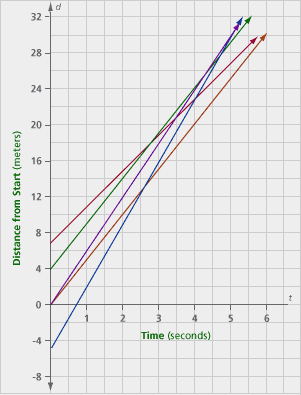Join us for conversations that inspire, recognize, and encourage innovation and best practices in the education profession.
Available on Apple Podcasts, Spotify, Google Podcasts, and more.
Sandy made some iced tea from a mix, using 12 tablespoons of mix and 20 cups of water. Chris and Pat thought it tasted great, but they needed 30 cups of tea for their party. Lee arrived, and they found they disagreed about how to make 30 cups that tasted just the same:
| Chris | It’s easy: Just add 10 tablespoons of tea and 10 cups of water. Increase everything by 10. |
| Pat | Wait a minute. 30 is just 1 and a 1/2 times 20, so since you add 1/2 as much water, add 1/2 the tea: add 10 cups of water and 6 tablespoons of tea. |
| Sandy | I think about it this way: We used 12 tablespoons for 20 cups, so 12/20 = 3/5 tablespoons for 1 cup, so for 30 cups we should use 30 x 3/5 = 18 tablespoons. |
| Lee | Wait: 20 – 12 = 8, so you want to keep the difference between water and tea at 8. Since there are 30 cups of water, we should use 30 – 8 = 22 tablespoons of tea. That will keep everything the same. |
Critique each of these methods. Which methods are the same? Which methods will really produce tea that tastes the same?
Tip: Which are absolute comparisons, and which are relative ones? What type of comparison is more useful here?
Five brothers ran a race. The twins began at the starting line. Their older brother began behind the starting line, and their two younger brothers began at different distances ahead of the starting line. Each boy ran at a fairly uniform speed. Here are the rules for the relationship between distance (d meters) from the starting line and time (t seconds) for each boy.
| Adam | d = 6t |
| Brett | d = 4t + 7 |
| Caleb | d = 5t + 4 |
| David | d = 5t |
| Eric | d = 7t – 5 |

Problem H3 taken from IMPACT Mathematics Course 2, developed by Education Development Center, Inc. (New York: Glencoe/McGraw-Hill, 2000), p.331-332. www.glencoe.com/sec/math
Problem H1
Chris’s method will produce tea that has too much mix. This method would work only if the original recipe called for the same amount of tea and water, which it doesn’t. In terms of fractions, 22/30 is not the same proportion as 12/20.
Problem H2

d. The triangle with side lengths 6, 8, and 10 is similar looking. A good comparison is the measures of the three angles of the triangle.
Problem H3
